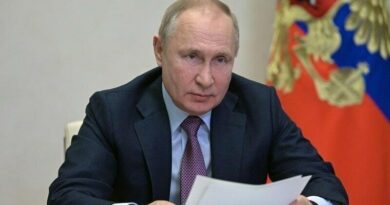Sri Lanka has declared the Country Bankrupt due to foreign debt of $51 billion
Sri Lanka has declared itself bankrupt due to its $51 billion foreign debt as the country faces the worst economic crisis in its history and protesters continue to demand the government’s resignation.
According to the foreign news agency AFP, severe food and fuel shortages in Sri Lanka, as well as prolonged power outages on a daily basis, led to the liberation of more than 20 million people in the country in 1948. The most painful crisis since then.
The government is seeking a bailout package from the International Monetary Fund aimed at preventing another catastrophic hard default.
China is Sri Lanka’s largest mutual lender, with China accounting for about 10 percent of its government debt, followed by Japan and India. Borrowed too much, which is why the country is now facing difficulties.
Sri Lanka also leased its strategic port of Hambantota to a Chinese company in 2017 after it failed to repay Beijing’s $1.4 billion loans used to build it.
All of this has raised concerns in the West and in neighboring India that the strategically important South Asian country is falling into a debt trap.
A Chinese Foreign Ministry spokesman said the recent default would not stop Beijing from lending money to Sri Lanka’s troubled economy.
The spokesman added that China has always done its best to help Sri Lanka’s economic and social development. We will continue to do so in the future.
The government had banned large-scale imports to save dwindling foreign exchange reserves and to use those reserves to pay off debts, but the shortages that resulted from the ban have sparked public outrage.
Rare availability of petrol, gas, and kerosene due to the ban on imports forced people to line up, leading to anti-government protests across the country.
Demonstrators said that people in the country are already very worried, we are all here because we are suffering from economic problems.
During the protests, mobs tried to storm the homes of government leaders and security forces dispersed the protesters with tear gas and rubber bullets.
For the fourth day in a row, thousands of people protested outside the office of Sri Lankan President Gotabaya Raja Pakse in the capital, Colombo, demanding his resignation.
Economists say government mismanagement, years of accumulated debt and unjust tax cuts have exacerbated the crisis, while international rating agencies have downgraded Sri Lanka’s global rating last year.
This effectively barred the country from accessing foreign capital markets to obtain new loans and meet food and fuel demand.
Sri Lanka’s finance ministry said the default was a last resort to prevent the republic’s financial situation from deteriorating further.
The finance ministry added that lenders were free to take advantage of any interest payments because of them or to choose to pay in Sri Lankan currency.
Finance Minister Ali Sabri had told parliament that the government was seeking about ً 3 billion from the IMF over the next three years to revive the economy.
Ministry officials told AFP last week that the government was developing a program for independent bondholders and other lenders to avoid further hard defaults.
Sri Lanka had earlier this year sought debt relief from India and China, but both countries offered more credit lines to buy goods from them instead.
Estimates show that Sri Lanka needed $7 billion to meet its debt burden this year, with only $1.9 billion in reserves at the end of March.




